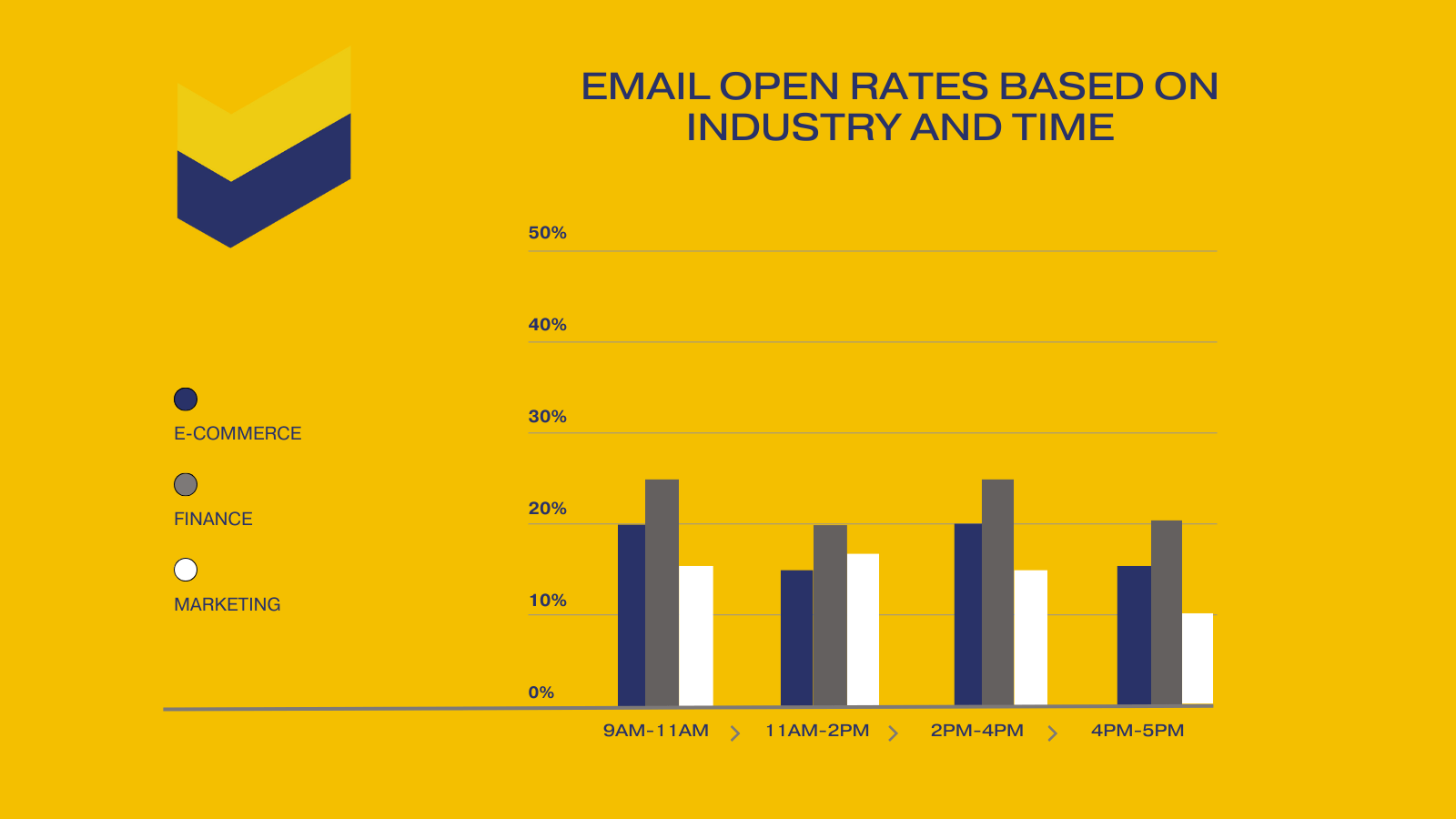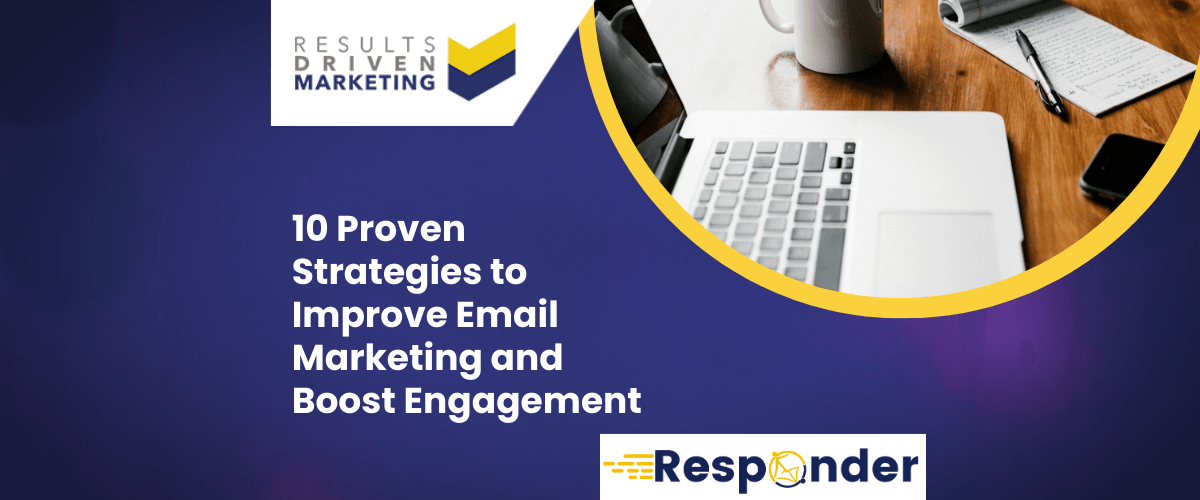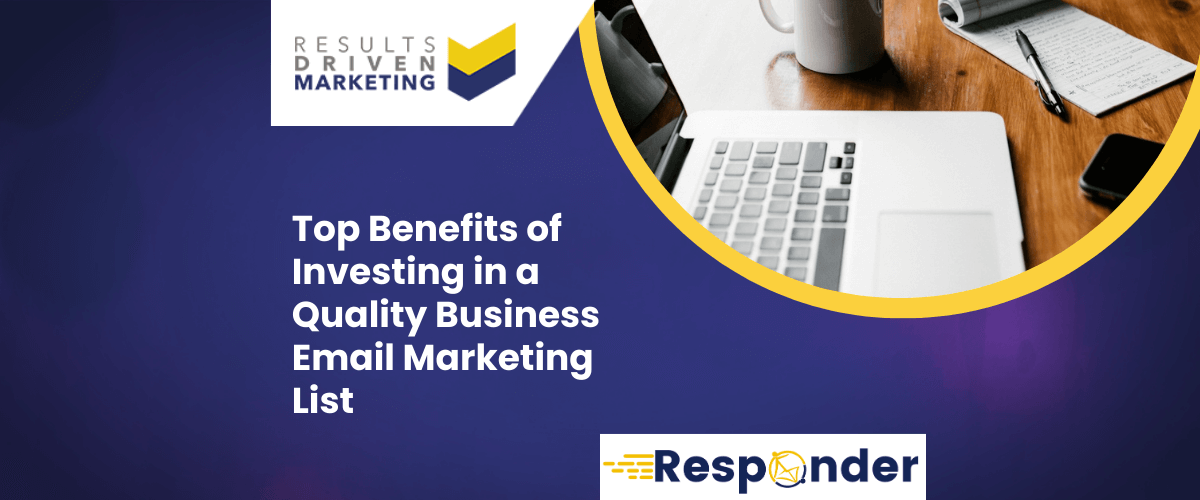
Email Marketing Explained
In an era dominated by social media, search engines, and ever-evolving digital advertising techniques, email marketing remains a cornerstone of effective communication and customer engagement for businesses of all sizes.
In this article, we will embark on a journey to demystify the art and science of email marketing, providing you with a comprehensive understanding of its principles, strategies, and the immense value it brings to your marketing efforts.
Whether you’re a seasoned marketer looking to refine your email campaigns or a newcomer eager to explore this dynamic channel, our exploration of email marketing will equip you with the knowledge and insights you need to harness its full potential.
Table of contents:
What is Email Marketing?
Definition and overview of email marketing
Email marketing, succinctly explained, is the strategic use of emails to promote products, services, or convey important messages to a targeted audience. It’s not just about sending out random emails; it’s a calculated approach where every email is a potential touchpoint, an opportunity to engage, inform, and convert.
From newsletters to promotional offers, from transactional emails to feedback requests, email marketing encompasses a broad spectrum of communication strategies designed to foster a connection between businesses and their audience.
The Importance of Email Marketing
Benefits and statistics that show the importance of email.
- High ROI: For every pound spent on email marketing, businesses can expect an average return of £42. It’s a testament to the power and efficiency of this channel.
- Direct Engagement: Unlike other platforms where your message might get lost in the noise, emails land directly in the recipient’s inbox, ensuring higher visibility.
- Personalisation: Email marketing platforms offer advanced segmentation capabilities, allowing businesses to tailor their messages based on the recipient’s behaviour, preferences, and past interactions.
- Measurable Results: From open rates to click-through rates, from conversions to bounce rates, every aspect of an email campaign can be tracked and analysed, providing invaluable insights for future strategies.
- Building Relationships: Emails provide a platform for businesses to nurture their leads, engage with their customers, and build lasting relationships over time.
In essence, when we talk about “email marketing explained”, it’s not just about sending emails. It’s about leveraging a powerful channel to drive engagement, foster relationships, and achieve tangible business outcomes. As we delve deeper into this guide, we’ll uncover more facets of this indispensable marketing tool.
Advantages of Using Email Marketing
When we delve into the realm of “email marketing explained”, it’s impossible not to highlight the myriad of advantages this channel offers. Let’s explore some of the most compelling benefits:
ROI and effectiveness of email campaigns
- Impressive Returns: It’s no secret that email marketing offers one of the highest ROIs in the digital marketing sphere. For businesses, this translates to more bang for their buck, making every email sent a potential goldmine.
- Targeted Campaigns: The beauty of email marketing lies in its ability to target specific segments of your audience, ensuring that your message resonates with the right people at the right time.
Building customer relationships and brand awareness
- Fostering Connections: Emails provide a direct line of communication to your audience, allowing businesses to nurture leads, address concerns, and foster a sense of community.
- Brand Recall: Consistent and well-crafted emails ensure that your brand remains top-of-mind for your audience, enhancing brand recall and loyalty.
Cost-effectiveness and tracking capabilities
- Budget-Friendly: Compared to other marketing channels, email marketing is incredibly cost-effective, allowing businesses, big or small, to reach a vast audience without breaking the bank.
- Data-Driven Insights: With advanced tracking capabilities, businesses can gain invaluable insights into user behaviour, campaign performance, and areas of improvement.
Disadvantages of Using Email Marketing
However, like all things, email marketing isn’t without its challenges. Let’s shed some light on potential pitfalls:
Potential for spam and unsubscribes
- The Spam Dilemma: If not executed correctly, there’s a risk that your emails might end up in the dreaded spam folder, reducing visibility and engagement.
- Unsubscribes: Overloading your audience with too many emails or irrelevant content can lead to increased unsubscribe rates, diminishing your reach.
Challenges in list building and segmentation
- Growing the List: Building a robust and relevant email list is a challenge that many businesses face, especially when starting from scratch. To solve this problem, you can buy data for your chosen markets from reputable suppliers like Results Driven Marketing.
- Effective Segmentation: While segmentation offers numerous benefits, it also poses challenges in terms of ensuring accuracy and relevance.
Is Using Email Marketing a Good Idea?
Discussing the pros and cons in the current digital landscape.
In the grand scheme of things, is diving into email marketing truly worth it?
The answer, quite simply, is a resounding yes.
While there are challenges to navigate, the benefits far outweigh the drawbacks. In today’s digital age, where personalisation and targeted communication reign supreme, email marketing stands out as a beacon of effectiveness. When executed with precision, it offers businesses a unique opportunity to connect, engage, and convert.
So, when we talk about “email marketing explained”, it’s not just about understanding the concept; it’s about recognising its undeniable potential in the modern business landscape.
When to Use Email Marketing
Navigating the vast landscape of digital marketing, one might wonder, “When is the optimal time to employ email marketing?” Well, let’s delve into this, shall we?
Building relationships and boosting brand awareness
- A Personal Touch: Emails offer a unique platform to communicate directly with your audience. It’s not just about promotions; it’s about sharing stories, updates, and information that resonate with your audience, fostering a deeper connection.
- Staying Top-of-Mind: Regular, value-driven emails ensure that your brand remains in the forefront of your audience’s minds, enhancing recall and loyalty.
Promoting content and generating leads
- Showcasing Value: Got a new blog post? A product launch? Email marketing provides the perfect platform to showcase your latest offerings, driving traffic and engagement.
- Lead Magnets: Through enticing offers, newsletters, and gated content, emails can be a powerful tool to generate and nurture leads, pushing them down the sales funnel.
Email Marketing Benefits
When we talk about “email marketing explained”, it’s essential to highlight the myriad benefits this channel offers.
Overview of the global reach and ROI of email marketing
- Unparalleled Reach: Emails transcend geographical boundaries, allowing businesses to reach a global audience with ease.
- Impressive Returns, Again: It’s worth reiterating that the ROI of email marketing is nothing short of impressive. For businesses, this means more engagement, conversions, and revenue with relatively minimal investment.
Email Marketing Stats by Industry
To truly grasp the power of email marketing, it’s crucial to delve into some industry-specific statistics.
B2B, B2C, and E-commerce email marketing trends
- B2B Trends: In the B2B realm, email marketing stands out as a primary channel for content distribution and lead generation. With tailored content and targeted campaigns, businesses can engage decision-makers effectively.
- B2C Dynamics: For B2C businesses, emails offer a direct line to consumers, promoting offers, sharing news, and driving sales. Personalisation plays a pivotal role, enhancing open rates and conversions.
- E-commerce Insights: For e-commerce businesses, email marketing is indispensable. From cart abandonment emails to promotional offers, from product launches to feedback requests, emails drive engagement, sales, and customer loyalty.
With these insights, it becomes evident that email marketing, when executed with precision and strategy, can be a game-changer for businesses across industries.
Getting Started with Email Marketing
Embarking on the email marketing journey might seem daunting at first. But fret not, for when we delve into “email marketing explained”, it becomes clear that with the right steps, it’s a journey worth taking. So, where does one begin?
Creating an email marketing strategy
- Define Your Goals: Before diving in, it’s crucial to outline what you aim to achieve. Whether it’s boosting sales, increasing website traffic, or fostering customer loyalty, having clear objectives will guide your efforts.
- Know Your Audience: Tailoring your emails to resonate with your target audience is paramount. Understand their preferences, pain points, and behaviours to craft compelling messages.
Choosing an email marketing platform
- Features Galore: Opt for a platform that offers a plethora of features – from easy-to-use templates to advanced analytics. Platforms like Responder, which is widely considered one of the best platforms in the UK offers all of this and more besides.
- Budget Considerations: While some platforms offer free tiers, it’s essential to consider scalability and choose a platform that aligns with your budget and needs.
Building your email list
- Quality Over Quantity: It’s tempting to amass a vast list, but it’s the quality of subscribers that truly matters. Focus on attracting individuals genuinely interested in your offerings.
- Opt-in Forms: Use engaging opt-in forms on your website, ensuring visitors have a clear and compelling reason to subscribe.
- Buy Reputably: Build your email marketing lists quickly, but choose a reputable supplier.
How to Send Marketing Emails
Now that you’re set up, the real fun begins. Sending out emails might seem straightforward, but there’s an art and science to it.
Implementing email segmentation
- Tailored Messages: Segment your list based on various criteria – from demographics to past interactions. This ensures that your emails resonate with specific segments, increasing engagement.
- Dynamic Content: Use dynamic content to tailor emails even further, ensuring that each subscriber receives content relevant to them.
A/B testing your marketing emails
- Test and Learn: From subject lines to call-to-actions, A/B testing allows you to understand what resonates with your audience, optimizing for better results.
- Iterative Process: Remember, A/B testing is an ongoing process. Regularly test different components to continually refine your strategy.
Analysing your email marketing performance
- Deep Dive: Use the analytics provided by your platform to gain insights into open rates, click-through rates, and conversions.
- Feedback Loop: Use these insights to refine your strategy, ensuring that your emails continually evolve and improve.
Setting email marketing KPIs
- Clear Metrics: Define clear KPIs – from open rates to conversion rates. This provides a clear benchmark to measure your efforts against.
- Regular Reviews: Periodically review your KPIs, adjusting as necessary to align with changing business goals.
Adjusting email components to improve results
- Iterative Refinement: Based on insights, tweak various components of your emails – from content to design – to optimize for better results.
- Feedback is Gold: Encourage feedback from your subscribers, using it to further refine your emails.
Using an email marketing report template
- Structured Insights: Use templates to structure your insights, ensuring that you have a clear overview of your performance at a glance.
- Share and Collaborate: Share these reports with your team, fostering collaboration and collective brainstorming to continually enhance your email marketing efforts.
With these steps in hand, the world of email marketing becomes less daunting and more of an exciting journey, ripe with opportunities for growth and engagement.
Key Considerations When Using Email Marketing
Diving deeper into the world of “email marketing explained”, it’s essential to be aware of certain key considerations. These aren’t just best practices; they’re pivotal aspects that can make or break your email marketing efforts.
Compliance with regulations and avoiding spam filters
- Stay Informed: The digital landscape is ever-evolving, and so are the regulations that govern it. Staying abreast of these changes ensures your emails remain compliant and effective.
- Build Trust: Ensuring your emails are compliant not only avoids potential legal pitfalls but also builds trust with your audience. After all, nobody likes unsolicited spam.
Email Regulations You Should Know
In the realm of email marketing, certain regulations stand out, ensuring both businesses and consumers are protected.
CAN-SPAM Compliance
- Clear and Honest: Ensure your subject lines are clear and not misleading. Your recipients should know what to expect when they open your email.
- Opt-Out Options: Every email should provide recipients with an easy way to opt-out or unsubscribe. And when they do, honor their request promptly.
GDPR Compliance
- Consent is King: Under GDPR, consent is paramount. Ensure you have explicit permission to email your European subscribers when running B2C campaigns. When targeting businesses ensure your message is relevant and you provide clear options to opt out.
- Data Protection: Safeguard your subscribers’ data, ensuring it’s stored securely and not shared without explicit consent.
Avoiding Spam Filters
- Quality Content: Ensure your content is relevant and valuable. Avoid spammy words or excessive use of caps and exclamation marks.
- Engagement Matters: High engagement rates signal to email providers that your content is wanted and valuable, reducing the chances of being flagged as spam.
Alternatives to Using Email Marketing
While email marketing is undeniably powerful, it’s just one tool in the vast digital marketing toolbox.
Overview of other digital marketing channels and their effectiveness
- Social Media: Platforms like Facebook, Instagram, and LinkedIn offer businesses a way to engage with their audience in real-time, fostering community and driving engagement.
- PPC and SEO: Paid ads and search engine optimization drive targeted traffic to your website, converting visitors into customers.
- Content Marketing: Blogs, videos, and other forms of content provide value to your audience, establishing your brand as an authority in your niche.
FAQ
As we wrap up our deep dive into “email marketing explained”, let’s address some frequently asked questions.
What are the different types of email campaigns?
- Newsletters, promotional offers, welcome emails, and transactional emails are just a few types of campaigns businesses can leverage.
How often should you send marketing emails?
- While there’s no one-size-fits-all answer, it’s essential to strike a balance. Too frequent, and you risk annoying your subscribers. Too infrequent, and you risk being forgotten.
How do you ensure your emails are GDPR compliant?
- Obtain explicit consent, safeguard subscriber data, and provide easy opt-out options.
What are the best practices for building an email list?
- Offer value, use engaging opt-in forms, and promote your newsletter across all your marketing channels.
How do you measure the success of an email campaign?
- Track metrics like open rates, click-through rates, conversion rates, and ROI to gauge the effectiveness of your campaigns.
With these insights in hand, businesses are well-equipped to navigate the world of email marketing, leveraging its power to drive growth and engagement.
Who are we?
Providing b2b database solutions is our passion.
Offering a consultancy service prior to purchase, our advisors always aim to supply a database that meets your specific marketing needs, exactly.
We also supply email marketing solutions with our email marketing platform.
We have the best data of email lists for your networking solutions as well as direct mailing lists & telemarketing lists
A good quality b2b database is the heartbeat of any direct marketing campaign…
It makes sense to ensure you have access to the best!
Call us today on 0191 406 6399 to discuss your specific needs.
Results Driven Marketing
0191 406 6399








